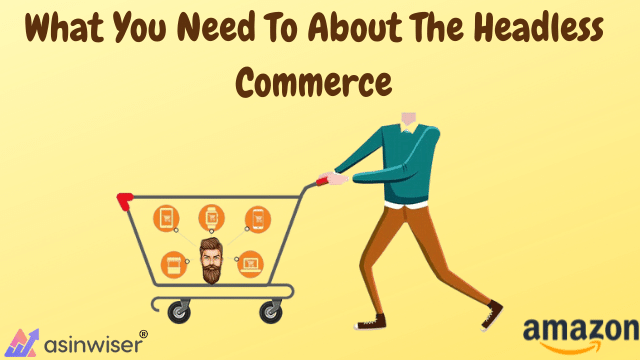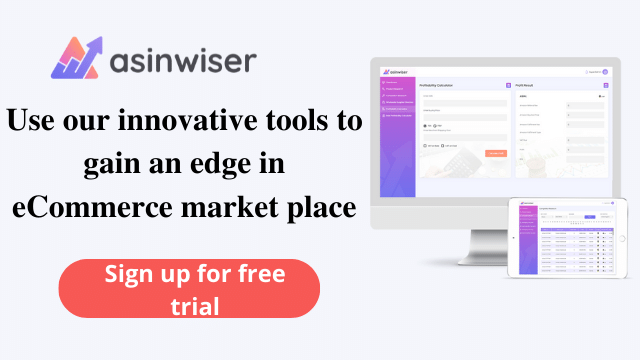
What You Need To About The Headless Commerce
The market is developing. Customers spend more time on the internet. As a result, more content is being consumed online, giving rise to newer purchasing touchpoints. Voice recognition, Ai, Kiosks, and other innovations are becoming new touchpoints for internet shopping.
An innovation known as headless commerce is becoming more prevalent to encourage brands/enterprises to sell goods to these young customers. There are numerous advantages to headless commerce, some of which will be discussed in this blog.
What Is Headless Commerce, And What Are The Advantages Of Headless Commerce?
The headless commerce method is a completely separated strategy in which the front-end and back-end are split and interact via APIs. The front-end component compensates for the UI, UX, and everything else with which a customer interacts.
The back-end system, on the other hand, handles and stores data as well as system features. So, in a nutshell, headless commerce is a solution. The front-end and back-end are distinct and operate independently of one another. As a result, changes made on one end do not affect the other, and everything runs smoothly.
Despite being electrically isolated, both components communicate via APIs, allowing headless commerce alternatives to be more engaging, user-centric, and versatile. Developers can fully exploit any front-end innovation to provide customized information to the target audience on any channel while communicating with a back-end solution via APIs and retaining all required features and functions.
Developers can fully exploit any front-end innovation to provide customized information to the target audience on any channel while communicating with a back-end solution via APIs and retaining all required features and functions.
The following are the primary advantages of headless commerce:
1. Complete control over your platform’s UI and UX
2. Optimized conversion optimization
3. Reduced time to market
4. Scalability
5. Financial savings
6. Streamlined Integration
Complete Control Over Your Platform’s UI And UX
The front-end, i.e. the product operating layer, and the back-end, i.e. the content distribution layer, are decoupled with headless for greater control over content delivery.
The consumer technique on their channel has surpassed them, which is why companies go headless. While their back-end supports their business, they require more from their front-end system. The advantage of headless commerce is that it allows an independent front-end, allowing the brand to tailor its UI based on consumer behavior.
Optimized Conversion Rates
You can use headless commerce to test out different front-end templates with customers. For example, you can test a different UI and UX for one region and a completely different UI and UX for another area to improve conversions. Consequently, a headless commerce option allows you to conduct rapid testing, allowing you to learn faster than your competition.
Reduced Time To Market
If you build a customized multi-channel solution for your brand in a traditional setting, such as fork (where the front-end and back-end solutions are customized to your needs), the time to market will be slower, and scaling will be more difficult.
In contrast, the headless commerce solution allows you to build multiple front-end experiences at the same time while adding new touchpoints. Because the content and functionalities are housed in the back-end, they can be controlled via APIs and delivered anywhere. This shortens the time to market while entering new markets and implementing cutting-edge technology.
Scalability
Nowadays, brands must become more adaptable and provide exceptional customized service offerings to customers. The decoupled design of a headless commerce solution enables brands to make changes on the fly, deploy rapid updates, and stay ahead of the competition.
Headless commerce enables brands to make rapid changes to their UI and UX to keep up with consumer-side technology without utilizing the bandwidth of the back-end IT team. In general, brands that use a traditional platform, such as SaaS solutions, release UI updates every few weeks. Businesses that use headless commerce, on the other hand, can adapt to the latest trends more quickly. Because your back-end is robust, you can easily scale by adjusting the UI and UX.
Financial Savings
Brands that use headless commerce solutions have typically outgrown the UI and UX functionalities of their primary or SaaS solution. While the back-end completely meets their required functionality, developing a personalized front-end experience in a traditional trading environment is typically prohibitively expensive.
While the back-end completely meets their required functionality, developing a personalized front-end experience in a traditional trading environment is typically prohibitively expensive. Headless commerce allows them to have a flexible front-end while using the same back-end engine, reducing back-end load. As a result, it lowers the overall cost of development and maintenance.
Streamlined Integration
headless commerce’s decoupled architecture allows for the smooth incorporation of various platforms or innovations via APIs, making it easier to interact with other media.
Yelo is the headless commerce CMS your company requires. It is appropriate for small to large businesses. The platform’s omnichannel capabilities and flexibility allow you to integrate it with any API or SDK your business requires.
An intelligent software tool—Asinwiser— is what you need as an Amazon. It is an impeccable solution for all your needs, including product research, competitor research, fba calculator and profitability calculator.
Share this:
Subscribe to Our Newsletter
Recent Post
- Top 13 Amazon Inventory Management Tools for FBA Sellers in 2023
- Asinwiser: The Ultimate OMSGuru Alternative for Amazon Sellers
- Repricer.com Alternative: Why Asinwiser is the Superior Choice for Amazon Sellers
- Aura Alternative: Why Asinwiser is the Superior Choice for Amazon Repricing
- Maximize Amazon Sales with Asinwiser: The Superior Amazon Repricer & Revenue Analytics Tool

